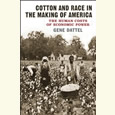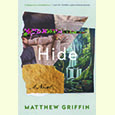Eternal Questions, Evolving Answers
Alan Lightman explores the limits of knowledge in Probable Impossibilities
“I confess that I myself do not believe in miracles,” writes Alan Lightman in his essay collection Probable Impossibilities. In its clarity and gentleness, that sentence embodies the character of much of Lightman’s writing, from the delicate fiction of Einstein’s Dreams (1992) to the spiritual exploration in his 2018 book of essays, Searching for Stars on an Island in Maine. Probable Impossibilities is classic Lightman, a mix of cutting-edge science, philosophical reflection, and storytelling that celebrates rational inquiry while respecting experiences of mystery and awe.
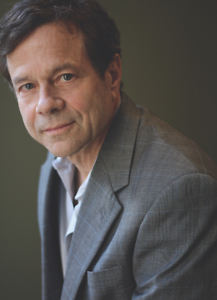
The main body of the book, introduced with a look at the ideas of 17th-century philosopher Blaise Pascal — “[Man] is equally incapable of seeing the Nothing from which he was made, and the Infinite in which he is swallowed up” — is divided into three sections: “Nothingness,” “Mind,” and “Infinity.” The concepts Lightman surveys are as profound as those headings suggest.
For example, there’s Caltech physicist Sean Carroll’s theory of “Two-Headed Time,” which builds on the work of fellow physicist Alan Guth. Carroll posits that time has existed forever and the expanding universe we inhabit mirrors a corresponding contraction on the other side of the Big Bang. This model has mind-boggling implications for the nature of time, as Lightman explains:
Now it is well known in the science of order and disorder that, other things being equal, larger spaces allow for more disorder, essentially because there are more places to scatter things. Equivalently, smaller spaces have more order. As a consequence, in the Carroll-Guth picture, the order of the universe was at a maximum at the Big Bang, with order decreasing both before and after. Recall that the forward direction of time is the movement of order to disorder. Thus the future points away from the Big Bang in both directions of time. A person living in the contracting phase of the universe sees the Big Bang in her past, just as we do. When she dies, the universe is larger than when she was born, just as it will be for us.
There are many such passages in the book, explorations of theory that reward a patient reader with a taste of conceptual adventure. Lightman, a trained physicist himself, acknowledges the unsettling effect of such ideas and suggests that their ability to make us question our most fundamental experience of reality is the source of their value. “In our extraordinarily entitled position of being not only living matter but conscious matter,” he writes, “we are the cosmic ‘observers.’… We are the only mechanism by which the universe can comment on itself.” In this way, he says, we create a “cosmos of meaning.”
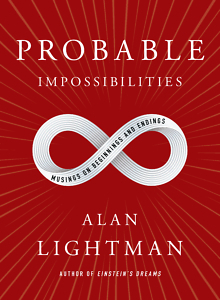 The final essay in the collection, “The Man Who Knows Infinity,” centers on Russian-born physicist Andrei Linde, now at Stanford University, who developed the theory of “eternal chaotic inflation.” As Lightman describes it, Linde’s theory “predicts that our universe is necessarily one of a vast number of universes, each of which is constantly and randomly spawning new universes in an unending chain of cosmic creation, extending into the future for eternity.” (This idea is the foundation of the concept of the “multiverse,” discussed at length in Lightman’s 2014 book The Accidental Universe.)
The final essay in the collection, “The Man Who Knows Infinity,” centers on Russian-born physicist Andrei Linde, now at Stanford University, who developed the theory of “eternal chaotic inflation.” As Lightman describes it, Linde’s theory “predicts that our universe is necessarily one of a vast number of universes, each of which is constantly and randomly spawning new universes in an unending chain of cosmic creation, extending into the future for eternity.” (This idea is the foundation of the concept of the “multiverse,” discussed at length in Lightman’s 2014 book The Accidental Universe.)
One of the delights of any Alan Lightman essay is his gift for combining explanations of the most esoteric concepts with storytelling and character study, and his take on Linde is a perfect example. The physicist comes across as a brilliant, brash individual who, for all his devotion to science, retains the need to pursue beauty in other forms. During a visit, he sits Lightman down to show off the photographs on his Flickr page. This work with the camera, Linde says, “allows me to feel another part of my brain. There is something beyond physics that is not measurable. … Photography is my art.”
Another pleasure of Lightman’s essays is his own distinctive voice: earnest, even reverent at times, but often with a touch of twinkly humor. There’s never a trace of academese in his work, and he tends to enliven the weightiest topics with little anecdotes. For example, a discussion of “cosmic biocentrism” includes a story about trying to use pieces of fruit to explain a solar eclipse to his 4-year-old granddaughter, who innocently asks, “Can you show me that on the computer?” And it’s not at all rare to run across a memorable line that would make a good literary tattoo — e.g., “There’s always room at the infinity hotel.”
Lightman, a Memphis native, is a polymath of a sort rarely found these days: a scientist, novelist, poet, philanthropist, and — though he might not embrace the label — philosopher, with a keen sense of both the power and the limits of reason. In a contentious, noisy time, his graceful instruction is a gift.
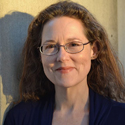
Maria Browning is a fifth-generation Tennessean who grew up in Erin and Nashville. Her work has appeared in Guernica, The Los Angeles Review of Books, and The New York Times. She’s the editor of Chapter 16.
